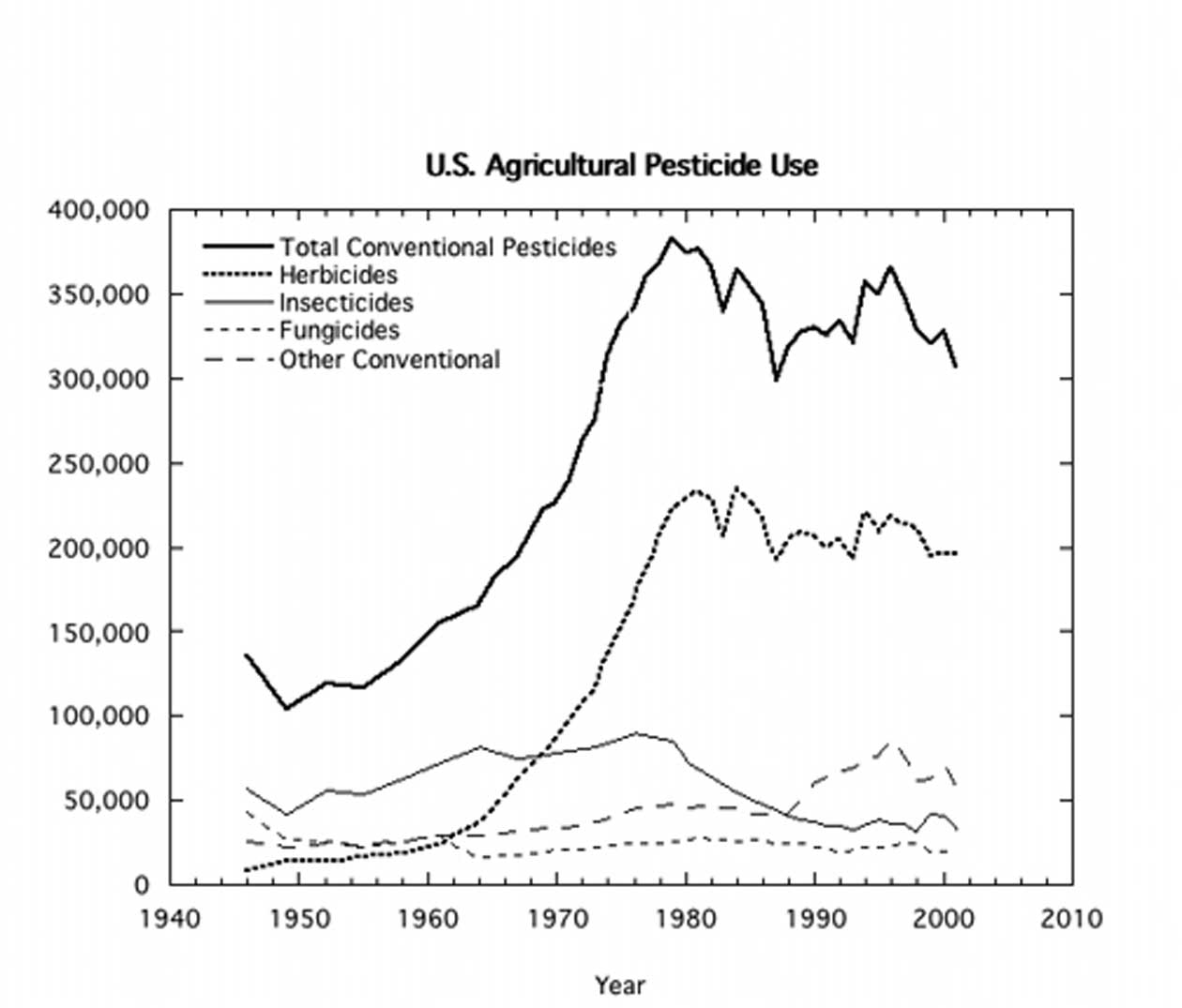almost all crops and horticultural crops in particular; and
• The rise of related environmental concerns among regulators and the general public resulting in greater regulation of pesticides and restrictions on use. A specific aspect of this has been the need to reduce levels of pesticides in both ground and surface waters and to minimize residue levels in food.
2.4.3.5 Water control in NAE cropping systems
Soil moisture in agriculture has a large impact on yield and plant health. Root growth and function is impaired if soils are either waterlogged or droughted and this in turn affects the vigor of the plant above ground.
Because many lowland soils are naturally waterlogged, especially during spring and fall, farmers have often drained their land with subsurface drains that are highly effective at removing water from large areas of land. The fired clay pipes were expensive and installation was labor-intensive so 1940s era drainage pipes were replaced with machine laid plastic pipes in the 1950s (Spoor and Leeds-Harrison, 1997). Large subsidies were made available to farmers to encourage soil drainage and from 1950 to 1990 vast areas were drained (c.f. Robinson and Armstrong, 1988 for a UK example), improving crop yields and increasing access to land for spring planting and harvesting at the end of the season. Access to land in fall also opened up the potential for winter cropping, which is now common over large parts of Europe and the US. While drainage on this scale certainly improved yields it also gave rise to serious water pollution problems due to oxidation of iron and sulphur compounds in soils and increased nutrient and pesticide runoff to rivers and streams (Sagardoy, 1993; EEA, 1994; Ongley, 1996; |
|
FAO, 1997). (See Chapter 3 for discussion of environmental impacts of irrigation.)
In NAE, irrigation is used extensively in southern Europe and the western United States. Much of this use focuses on high value horticultural crops, although there is also appreciable usage in some of the major arable crops such as maize, soybeans and potatoes. Overall, within the EU (15), there has been a rise in the percentage of irrigated crops from 4 to 9% over the last forty years (FAOSTAT, AQUASTAT). This average value disguises the greater areas irrigated in the hotter southern countries and the much lower usage farther north. In the United States, the area under irrigation doubled between 1949 and 1979 to 21 million hectares and by 1987 had more than doubled again (Rhoades, 1990). Although irrigated land is only 18% of the total harvested cropland, farms with irrigated land receive 60% of the total market value of crops in the United States. Irrigation not only increases crop value, it can also increase water use efficiency (Howell, 2001) by increasing the mass of crop produced per volume of water.
A major challenge for irrigated agriculture is increasing competition for water, primarily due to population increase (NRC, 1996). As a result of this, irrigation cost will increase (CAST, 1996); already the average irrigation application rate has declined from 1080 ha-mm per ha (3.55 acre-ft per acre) in 1950 to 756 ha-mm per ha (2.48 acre-ft per acre) in 2000.
The desire for increased productivity has been a major driver increasing the use of irrigation in the NAE, along with an increasing demand for products outside their normal production period (especially for fruits and vegetables) and the increased profitability of crop production using irrigation methods. |

